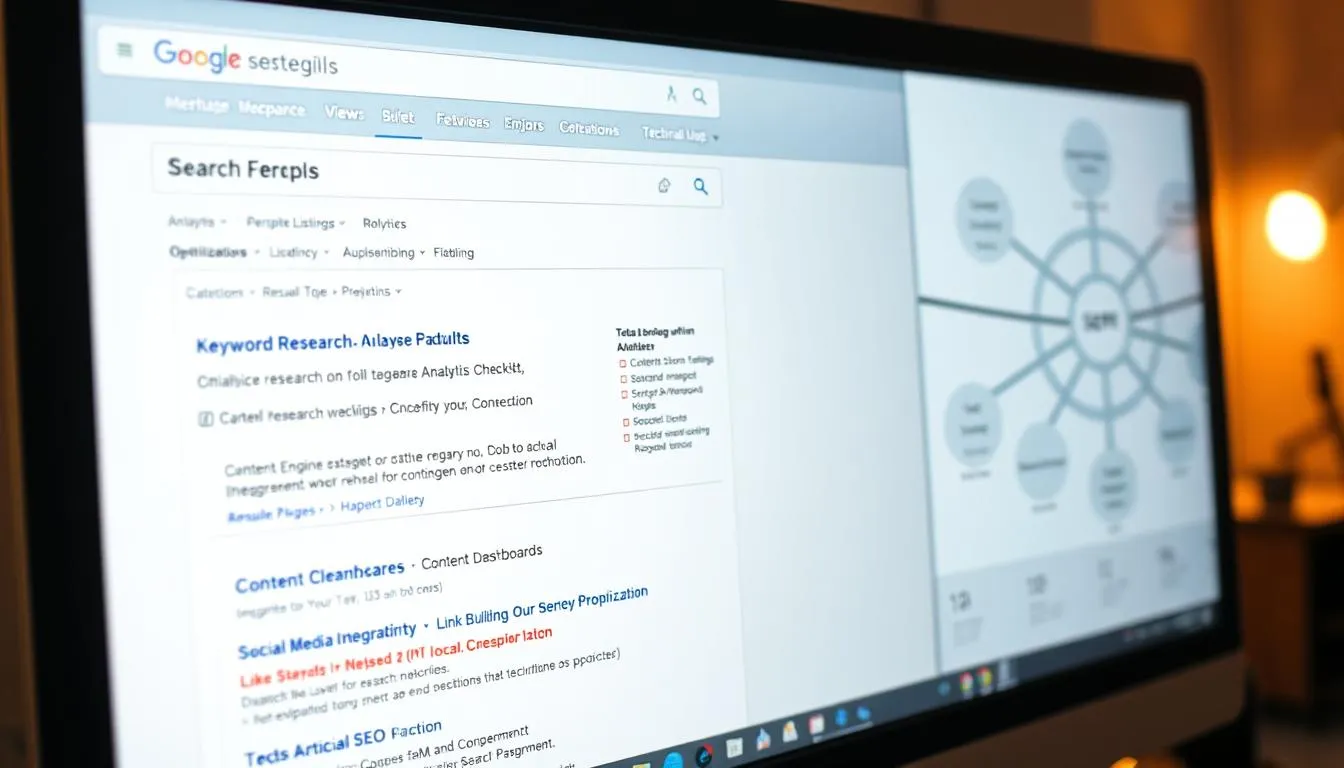Remember the last time you discovered a product that exactly matched what you needed? That’s the power of connecting with your audience in the digital age. Today, nearly 5 billion people scroll, search, and shop online daily. If your business isn’t meeting them where they are, you’re missing a world of opportunity.
Think about your favorite local shop. Now imagine it reaching customers in Tokyo or London without opening a physical store. That’s the reality digital tools create. With 2.14 billion digital buyers globally, the marketplace never sleeps – and neither should your growth strategy.
Traditional methods can’t match this reach. A well-crafted online presence lets you engage customers 24/7, build relationships through social media, and turn casual browsers into loyal fans. Platforms like Amazon prove even small businesses can compete globally when using the right strategies.
This isn’t just about surviving – it’s about thriving. Whether you’re a entrepreneurs or established brand, digital channels offer measurable ways to expand. From targeted ads to email campaigns, every click tells a story about what your audience wants.
Key Takeaways
-
Global internet users exceed 4.95 billion – your next customer is online
-
Digital platforms enable 24/7 revenue generation with minimal overhead
-
Integrated strategies outperform single-channel marketing efforts
-
Market accessibility now favors businesses of all sizes
-
Digital engagement builds stronger customer relationships than traditional ads
-
Real-time data helps refine campaigns for better results
Harnessing Online Marketing Solutions for business Growth
What if your message reached only people genuinely interested in your offerings? Digital tools make this possible through laser-focused audience targeting. Unlike traditional methods, these strategies let you connect with specific groups based on location, interests, and even shopping habits.
Defining the Core Benefits
Modern strategies offer three game-changing advantages:
-
Precision targeting: Show ads to parents in Chicago or yoga enthusiasts in Austin
-
Real-time adjustments: Change campaigns based on instant performance data
-
24/7 availability: Your store never closes – even at 3 AM
Why Digital Channels Matter
Billboards can’t tell you who glanced at your ad. But digital platforms do. You’ll see exactly how many people clicked, shared, or bought something. This feedback loop helps refine campaigns for better outcomes.
| Features | Digital Marketing | Traditional Marketing |
|---|---|---|
| Targeting Precision | ✅ Neighborhood-level | ❌ City-wide |
| Cost Efficiency | $0.50 per click | $500+ per ad spot |
| Customer Interaction | Direct messaging | One-way communication |
| Availability | Always active | Limited hours |
| Accessibility | All budget sizes | High entry costs |
Small companies now compete with giants using smart budget allocation. A local bakery can outrank national chains in search results through optimized content and strategic ads. The playing field isn’t just level – it’s tilted toward those who adapt fastest.
Understanding the Digital Marketing Landscape
In 1994, the first banner ad sparked a revolution – 44% of people clicked it. Today, that same space holds personalized messages predicting what you’ll want next. This transformation shows how campaigns evolved from static ads to dynamic conversations.

The Evolution of Online Campaigns
Early efforts resembled shouting into crowds. Now strategies whisper directly to individuals. Three phases define this shift:
| Era | Approach | Tools | Results |
|---|---|---|---|
| 1990s-2000s | Broadcast messaging | Basic websites, email blasts | 0.1% conversion rates |
| 2010s | Social media targeting | Facebook ads, SEO | 2-5% engagement |
| 2020s | AI-driven personalization | Chatbots, predictive analytics | 15%+ ROI common |
Seven core strategies now fuel modern efforts:
-
Content that educates
-
Email nurturing sequences
-
Social community building
-
Mobile-first experiences
-
Paid ad precision
-
Partnership networks
“The best campaigns feel like helpful friends, not salespeople.”
Data from 2023 shows businesses using 4+ strategies grow 3x faster than single-channel users. This interconnected approach turns casual viewers into brand advocates through consistent, value-driven touchpoints.
content marketing: Telling Your Brand’s Story
Ever heard a story so good you wanted to share it immediately? That’s the magic of content marketing – turning your brand into a conversation starter. Through blogs, videos, and podcasts, businesses craft narratives that stick like favorite book characters.
Creating Compelling Content
Great content answers questions before audiences ask them. A how-to video might guide first-time users, while an infographic simplifies complex data. Formats work best when matched to customer needs:
-
Blog posts build trust through expertise
-
Podcasts create intimate connections
-
Case studies prove real-world results
Local coffee shops doubling as community hubs show this principle. Their social media posts featuring neighborhood stories often outperform generic ads.
Effective Distribution Channels
Even brilliant content needs the right stage. A website acts as your home base, while social media spreads ideas like wildfire. Consider these platforms:
| Channel | Best For | Engagement Boost |
|---|---|---|
| Visual storytelling | +42% vs text-only | |
| Email newsletters | Nurturing leads | 50% higher conversions |
| YouTube | Product demos | 3x longer view times |
Consistency matters most. Weekly blog updates keep websites fresh for search engines, while regular social posts maintain audience interest. As one bakery owner put it: “Our TikTok bread-making clips brought more foot traffic than our street sign.”
SEO: Boosting Your Search Engine Rankings
Imagine your website as a library book – SEO ensures it’s shelved in the right section with a glowing recommendation. Search engines like Google act as librarians, scanning billions of pages to match user queries with relevant answers. Proper optimization makes your content stand out in crowded search results like a bestseller on display.

keyword research & Optimization
Finding the right keywords is like learning your audience’s secret language. Tools like Google Keyword Planner reveal what phrases people actually type into search bars. For example, a bakery might target “gluten-free birthday cakes” instead of generic “desserts” to attract specific buyers.
On-Page & Off-Page Techniques
Optimization happens both inside and outside your website. On-page tweaks include crafting clear title tags and organizing content with headers. Off-page efforts focus on earning quality backlinks – think of them as votes of confidence from other sites.
| On-Page Tactics | Off-Page Tactics | Impact Level |
|---|---|---|
| Meta descriptions | Guest blogging | High |
| Header tags | Social shares | Medium |
| Image alt text | Directory listings | Low |
Improving User Experience
Search engines reward sites that keep visitors happy. A page loading 2 seconds faster can boost conversions by 15%. mobile-friendly designs and intuitive menus also signal quality to search engine algorithms.
“Google’s Core Web Vitals update made user experience metrics part of ranking calculations – it’s no longer optional.”
Regular updates maintain your SEO edge. Monthly content refreshes and broken link checks prevent digital cobwebs. While demanding effort, these practices deliver steady traffic growth – 60% of clicks go to organic search results.
email marketing: Direct Engagement with Customers
What if every dollar spent brought back $44? That’s the reality of email marketing – a channel delivering 4,400% ROI for savvy businesses. With 4 billion active users checking inboxes daily, this direct line to customers remains unmatched for driving action.
Designing Impactful email campaigns
Great emails feel like personalized notes, not bulk blasts. Start by slicing your list into groups:
-
New subscribers get welcome sequences
-
Loyal customers receive exclusive offers
-
Cart abandoners see gentle reminders
Tools like Mailchimp and HubSpot simplify this segmentation. Their drag-and-drop editors let you craft mobile-friendly templates in minutes. A/B test subject lines – “Your Weekend Deal Inside” outperforms “Monthly Newsletter” by 37% in open rates.
Measuring Campaign Success
Track these three metrics religiously:
| Metric | Industry Average | Top Performers |
|---|---|---|
| Open Rate | 21% | 35%+ |
| Click Rate | 2.5% | 10%+ |
| Conversion Rate | 1.5% | 5%+ |
“Email’s magic lies in its adaptability,” notes a Salesforce marketing lead. “See low opens? Refresh your subject lines. Weak clicks? Rework your CTAs.” Weekly reviews keep campaigns sharp – 63% of brands tweak emails monthly for better results.
Build lists ethically using double opt-ins. Cleanse inactive addresses quarterly to maintain deliverability. When done right, email becomes a profit engine that runs 24/7 – even while you sleep.
Social Media Marketing: Creating Community and Engagement
Did you know the average person scrolls through 300 feet of content daily? That’s taller than the Statue of Liberty. With 2 hours and 27 minutes spent on social media platforms each day, your audience is already there – waiting to connect.

Brands like Gillette prove the power of community-building. Their body positivity campaign sparked 2.3 million shares by celebrating real stories. This approach turns followers into advocates, not just viewers.
Strategies for Consistent Interaction
Success lies in daily dialogue, not occasional posts. Try these tactics:
-
Host weekly Q&A sessions using Instagram Stories
-
Share user-generated content with branded hashtags
-
Respond to comments within 4 hours (faster than 89% of brands)
Platform analytics reveal golden opportunities. When a skincare brand noticed 68% of their audience engaged with tutorial videos, they tripled video content. Sales jumped 40% in three months.
“Social platforms are focus groups that never close. Listen first, sell second.”
Small businesses thrive here too. A Midwest bookstore grew its following 500% by hosting virtual author chats. No ad budget needed – just genuine conversations that built a loyal reader community.
Mobile Marketing: Connecting with On-The-Go Consumers
Your next customer is probably reading this on a phone right now. With 6.6 billion smartphone users worldwide, screens have become gateways to instant decisions. People spend 3-6 hours daily scrolling – and 66% of emails get opened mid-commute or during lunch breaks.
Optimizing for Mobile Devices
Small screens demand big thinking. Websites must adapt in real-time – buttons enlarge, menus simplify, and checkout flows shrink to thumb-friendly taps. A one-second delay in loading times can slash conversions by 20%.
Three essentials for mobile success:
-
responsive design: Content reshapes flawlessly across devices
-
Speed-first approach: Compress images, minimize redirects
-
Frictionless payments: Saved cards, one-click purchases
Location-based tactics amplify relevance. Coffee shops ping passersby with midday discounts, while retailers nudge app users lingering near stores. These moments convert 3x better than generic ads.
Timing transforms campaigns. Send lunch deals at 11:30 AM, not 3 PM. Test send frequencies – 73% of customers prefer weekly updates over daily pings. As one florist discovered: “Texting birthday reminders two days early boosted same-day orders by 40%.”
PPC Marketing: Maximizing Paid Advertising Efficiency
What if you only paid for customers who showed real interest? That’s the magic of pay-per-click (PPC) advertising. Unlike billboards or TV spots, you’re charged only when potential buyers click your ads. Platforms like Google Ads let businesses bid on keywords – turning searches into sales opportunities.
Budgeting and Targeting Best Practices
Smart budgets start with daily caps. Set limits based on conversion goals rather than guesswork. A local gym might allocate $15/day to target “yoga classes near me” while ignoring broader fitness terms.
Three targeting layers boost efficiency:
-
Demographics: Age, income, or job title filters
-
Behavior: Recent searches or shopping habits
-
Timing: Show ads during business hours
| Keyword Type | Cost Per Click | Conversion Rate |
|---|---|---|
| Broad Match | $2.50 | 1.8% |
| Phrase Match | $1.80 | 3.2% |
| Exact Match | $3.00 | 5.1% |
Crafting Persuasive Ad Copy
Great ads answer fast. Lead with clear benefits in 30 characters or less. “24/7 Plumbing Rescue” outperforms “Quality Plumbing Services” by 22% in click-through rates.
Follow this formula for high-performing text:
-
Attention-grabbing headline
-
Specific value proposition
-
Urgent call-to-action
“Test two versions of every ad. Sometimes changing ‘Get Started’ to ‘Claim Offer’ lifts conversions by 18%.”
Update campaigns weekly using performance data. Pause underperforming keywords and double down on what works. One bakery increased orders 60% by shifting bids from “cakes” to “custom birthday cupcakes.”
Affiliate Marketing: Expanding Your Sales Network
Imagine multiplying your sales team overnight without hiring a single employee. That’s the power of affiliate partnerships. This model lets businesses grow through trusted promoters who earn commissions for every sale they drive. It’s like having dozens of enthusiastic salespeople working round-the-clock.
Selecting the Right Partners
Successful programs start with alignment. Look for promoters whose audiences match your ideal customer profile. A fitness app gains more from partnering with yoga influencers than tech reviewers.
Three factors separate top performers:
-
Audience relevance: Do their followers need your product?
-
Content quality: Will their promotions reflect your brand well?
-
Conversion history: Have they driven sales for similar businesses?
Tracking Performance and Commissions
Modern tools track every click and sale automatically. Platforms like ShareASale provide real-time dashboards showing which affiliates deliver results. Clear metrics prevent disputes and build trust.
| Commission Model | Best For | Average Rate |
|---|---|---|
| Pay Per Sale | Physical products | 10-15% |
| Pay Per Lead | Service providers | $5-25 |
| Revenue Share | Subscription services | 20-30% |
Monthly bonus tiers keep top affiliates motivated. One skincare brand increased referrals 70% by offering higher rates after hitting sales thresholds. Regular payouts and performance reports maintain strong partnerships.
“Treat affiliates like valued team members – their success becomes yours.”
Advanced Digital Marketing Tools & Trends
business growth now hinges on tools that anticipate customer needs. Modern platforms analyze data patterns to predict trends, letting companies stay ahead. These innovations transform how brands connect with audiences.
Leveraging Analytics for Better Insights
Real-time dashboards track what works instantly. Tools like Google Analytics 4 reveal hidden opportunities – like which blog posts drive purchases. A/B testing becomes effortless, with AI suggesting winning variations.
Emerging Platforms and Technologies
Voice search optimization and AI chatbots redefine engagement. TikTok’s algorithm, for example, prioritizes authentic content over polished ads. Early adopters gain loyal followings before markets saturate.
Integrating Multi-Channel Strategies
Unified campaigns blend email, social, and SMS seamlessly. A clothing brand might sync Instagram posts with abandoned cart emails. This approach boosts conversions 27% compared to single-channel efforts.
Adaptation beats perfection. Test new tools quarterly, but focus on strategies delivering measurable results. The right mix turns data into lasting customer relationships.
Useful Resources
For additional insights, check out these valuable resources:
- comprehensive SEO guide - Moz
- marketing best practices - HubSpot
- digital marketing insights - Neil Patel
- SEO and marketing strategies - SEMrush
- Google Ads best practices - Google
FAQ
How can SEO improve my website’s visibility?
SEO helps your site rank higher on search engines like Google by optimizing keywords, improving page speed, and creating quality content. Tools like SEMrush or Ahrefs can track rankings and suggest adjustments. Higher visibility often leads to more organic traffic and conversions.
What makes email campaigns effective?
Strong subject lines, personalized content, and clear calls-to-action (CTAs) drive engagement. Platforms like Mailchimp or HubSpot offer analytics to track open rates and click-throughs. Testing different designs and timing can refine your strategy over time.
Why is mobile optimization important?
Over 60% of web traffic comes from mobile devices. A responsive design ensures fast loading times and easy navigation on smartphones. Google also prioritizes mobile-friendly sites in search results, impacting your rankings.
How do I choose the right affiliate partners?
Look for partners whose audience aligns with your brand. Platforms like ShareASale or Amazon Associates provide performance data. Transparent communication and fair commission structures build long-term relationships.
What are cost-effective PPC strategies?
Focus on long-tail keywords (e.g., “affordable running shoes for flat feet”) to target niche audiences. Use Google Ads’ keyword planner to set budgets and A/B test ad copies. Retargeting ads can also boost conversions from previous visitors.
Which social platforms drive the most engagement?
Instagram and TikTok excel for visual brands, while LinkedIn works for B2B. Posting polls, stories, or user-generated content keeps audiences active. Tools like Hootsuite help schedule posts and monitor interactions.
How do I measure content marketing success?
Track metrics like time spent on pages, shares, and backlinks using Google Analytics. High-performing blogs or videos can be repurposed into newsletters or infographics. Consistent quality builds trust and authority.
What tools help with multi-channel campaigns?
Sprout Social manages social media, email, and ads in one dashboard. Google Data Studio visualizes cross-channel performance. Integrating CRM systems like Salesforce ensures cohesive customer journeys.
